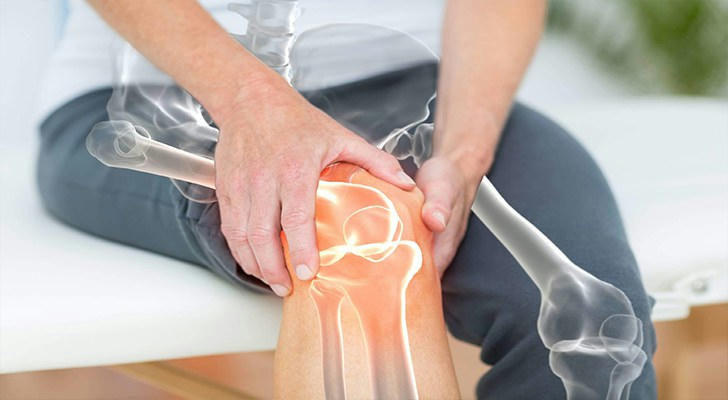Say Goodbye to Joint Pain: A Comprehensive Look at Arthritis Treatments!
Arthritis affects millions of people worldwide, causing pain, stiffness, and reduced mobility. It can significantly impact daily life, making simple tasks feel daunting. However, understanding the various treatments available can empower individuals to manage their symptoms effectively. This article will explore the types of arthritis, treatment options, and lifestyle changes that can help alleviate joint pain.

What is Arthritis?
Arthritis is an umbrella term for over 100 different conditions that affect the joints. The two most common types are:
1. Osteoarthritis (OA)
Osteoarthritis is often referred to as "wear and tear" arthritis. It occurs when the cartilage that cushions the joints deteriorates over time, leading to pain and stiffness. OA is more common in older adults but can also result from joint injuries or obesity. The symptoms typically develop gradually and can include:
•Pain during movement or after prolonged activity.
•Stiffness, especially in the morning or after sitting for long periods.
•Swelling around the affected joints.
•A grating sensation or popping sound when moving the joint.
2. Rheumatoid Arthritis (RA)
Rheumatoid arthritis is an autoimmune disorder where the body’s immune system mistakenly attacks the joints, causing inflammation, pain, and swelling. Unlike OA, RA can affect people of all ages and may lead to joint deformities if not treated promptly. Symptoms of RA often include:
•Symmetrical joint pain (affecting both sides of the body).
•Morning stiffness lasting more than 30 minutes.
•Fatigue and general malaise.
•Fever and loss of appetite.

Why is Treatment Important?
Effective arthritis treatment is crucial for several reasons:
•Pain Relief: Managing pain allows individuals to engage in daily activities without discomfort.
•Preventing Joint Damage: Early intervention can slow the progression of arthritis and prevent irreversible damage to the joints.
•Improving Quality of Life: With proper treatment, many people can maintain an active lifestyle and enjoy their favorite activities.

Treatment Options for Arthritis
1. Medications
Medications are often the first line of defense against arthritis pain. Depending on the type and severity of arthritis, healthcare providers may recommend:
•Nonsteroidal Anti-Inflammatory Drugs (NSAIDs): These medications help relieve pain and reduce inflammation. Common OTC options include ibuprofen (Advil) and naproxen (Aleve). Prescription NSAIDs may be stronger and provide better relief for chronic pain.
•Corticosteroids: Drugs like prednisone can quickly reduce inflammation and suppress the immune system in cases of RA. They may be administered orally or through injections directly into the affected joint.
•Disease-Modifying Antirheumatic Drugs (DMARDs): These medications are specifically used for rheumatoid arthritis to slow disease progression and prevent joint damage. Methotrexate is a commonly prescribed DMARD that helps manage symptoms effectively.
•Biologic Agents: A newer class of DMARDs that target specific components of the immune system involved in inflammation. Examples include adalimumab (Humira) and etanercept (Enbrel). These medications are often used when traditional DMARDs are ineffective.
2. Physical Therapy
Physical therapy plays a vital role in managing arthritis:
•Exercise Programs: A physical therapist can design a personalized exercise program that focuses on strengthening muscles around the joints, improving flexibility, and enhancing overall mobility. Low-impact exercises like swimming or cycling are often recommended.
•Manual Therapy: Techniques such as massage or manipulation can help relieve pain and improve function.
•Education: Physical therapists also educate patients on proper body mechanics and joint protection strategies to minimize strain during daily activities.
3. Lifestyle Changes
Making certain lifestyle changes can significantly impact arthritis management:
•Weight Management: Maintaining a healthy weight reduces stress on weight-bearing joints, which can alleviate pain and improve mobility. Even a small amount of weight loss can make a significant difference in symptoms.
•Regular Exercise: Low-impact activities like swimming, walking, or cycling can enhance joint function without putting excessive strain on them. Stretching exercises also help maintain flexibility.
•Heat and Cold Therapy: Applying heat pads or cold packs can provide temporary relief from arthritis pain. Heat helps relax muscles, while cold reduces inflammation.
4. Assistive Devices
Using assistive devices can make daily tasks easier:
•Braces or Splints: These devices provide support to affected joints during movement.
•Walking Aids: Canes or walkers help maintain balance and reduce pressure on painful joints.
5. Surgical Options
When conservative treatments fail to provide relief, surgical options may be considered:
•Arthroscopy: A minimally invasive procedure where a small camera is inserted into the joint to remove damaged tissue or debris.
•Joint Replacement Surgery: In cases of severe damage, replacing a damaged joint with an artificial one may be necessary. Commonly replaced joints include knees and hips.
Alternative Therapies
Some individuals find relief from arthritis symptoms through alternative therapies:
•Acupuncture: This traditional Chinese medicine technique involves inserting thin needles into specific points on the body to relieve pain.
•Supplements: Some studies suggest that glucosamine and chondroitin may help alleviate osteoarthritis symptoms, although results are mixed. Always consult with a healthcare provider before starting any new supplement regimen.
•Fish Oil: Omega-3 fatty acids found in fish oil have anti-inflammatory properties that may benefit those with rheumatoid arthritis.
Coping Strategies
Living with arthritis requires not only medical treatment but also effective coping strategies:
1. Stay Informed
Knowledge about your condition empowers you to make informed decisions about your treatment plan. Attend educational sessions or support groups where you can learn from others facing similar challenges.
2. Mindfulness Practices
Techniques such as yoga, meditation, or tai chi can help reduce stress and improve overall well-being. These practices promote relaxation and may help alleviate some symptoms associated with chronic pain.
3. Dietary Considerations
A balanced diet rich in anti-inflammatory foods—such as fruits, vegetables, whole grains, lean proteins, nuts, and seeds—can support overall health. Some people find that certain foods trigger their symptoms; keeping a food diary may help identify these triggers.
Conclusion
Arthritis doesn’t have to dictate your life. With a comprehensive approach that includes medications, physical therapy, lifestyle changes, alternative therapies, and possibly surgical interventions, many people find effective ways to manage their symptoms and maintain an active lifestyle.If you’re experiencing joint pain or stiffness, consult with a healthcare professional who can guide you through treatment options tailored to your needs. Remember that early intervention is key—taking action now can lead to a more comfortable future free from debilitating joint pain.Say goodbye to joint pain by exploring these treatments today! Your journey toward better health starts with understanding your options and taking proactive steps toward management. With the right approach, you can reclaim your life from arthritis!
